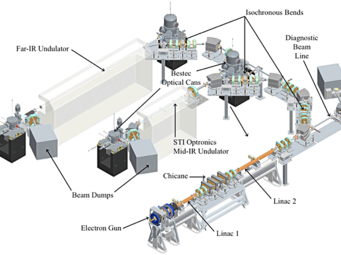The FHI free-electron laser (FEL) facility
Latest News:
1st 2-color operation of FHI FEL achieved on December 8th, 2023
1st Lasing of the new far-infrared FEL on June 8th, 2023
The new 2-color FEL facility at the Fritz Haber Institute
The FHI mid-infrared free-electron laser (FHI FEL) provides intense, pulsed mid-infrared (MIR) radiation continuously tunable from <3 µm to >50 µm. Since user operation started in 2013, the FHI FEL has enabled in-house user groups and their collaborators to run experiments in diverse fields ranging from spectroscopy of clusters, nanoparticles, and bio-molecules in the gas phase to nonlinear solid-state spectroscopy and surface science. This has resulted in about 100 peer-reviewed publications so far. A 2-color upgrade of the FHI FEL was funded by the Max Planck Society in 2018. Installation of the upgrade was completed in 2022. The system has been commissioned in 2023. First 2-color operation was achieved in December 2023, making the FHI FEL a worldwide unique radition source.
The FHI FEL Upgrade essentially includes the addition of a second short-Rayleigh-range undulator FEL beamline as outlined in the figure below. The second FEL branch is designed to permit lasing in the far-infrared (FIR) regime from <5 µm to >160 µm. In addition, a 500 MHz kicker cavity has been inserted downstream of the electron accelerator. It is powered by a 65-kW, 500-MHz solid-state amplifier and operates in a dipole mode using the strong electric field between two vanes to deflect electron bunches up to 50 MeV energy alternatingly left and right by an angle of ±2°. The kicker cavity makes simultaneous operation of both FEL beamlines possible by deflecting every second electron bunch of the 1 GHz bunch train from the accelerator to the MIR branch and every other second bunch to the FIR branch. In this 2-color mode both FEL’s run in parallel each generating infrared pulses at independently tunable wavelengths each at 500 MHz repetition rate. In addition, 2-color operation at reduced repetition rates (e.g. 55.5 MHz of both MIR and FIR pulses), as needed for some applications, will also be available. Furthermore, two additional small dipole magnets upfront and behind the kicker cavity permit conventional single-color operation of either the MIR or the FIR FEL when the 500 MHz field is off.
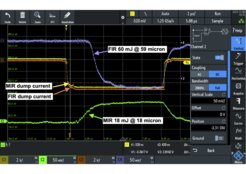
On December 8th, 2023 we were able to operate the FHI FEL for the first time in 2-color mode, which has been our main goal for the last couple of years. In 2-color mode both MIR and FIR FEL run simultaneously. This is made possible by operating the kicker cavity that splits the electron bunch train in two; one of which is steered to the MIR FEL, the other one to the FIR FEL.
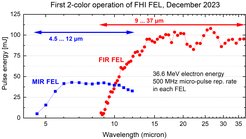
Layout of the 2-color FEL system
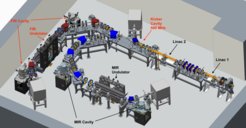
On December 8, 2023 we observed 2-color operation with both FEL’s running at the same time. This is made possible by the kicker cavity which steers every second electron bunch coming from the accelereator to the FIR FEL and every other second to teh MIR FEL.
How it works?
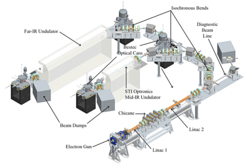
The free-electron laser (FEL) at the Fritz Haber Institute (FHI) generates intense pulses of infrared (IR) radiation of widely tunable wavelength from 3 µm to 60 µm. Unlike conventional lasers, where the radiation is produced in a gas, liquid, or solid, in an FEL it is generated by an electron beam propagating freely through a vacuum tube. In a device called an undulator, strong magnetic fields of alternating polarity force the electrons to undergo a wiggling (undulating) motion, thereby causing the emission of radiation. The radiation wavelength can be tuned simply by varying the electron energy or the magnetic field strength. Before entering the undulator, however, the electrons must be accelerated to almost the speed of light, requiring a complex electron accelerator.
What we can do with a FEL?
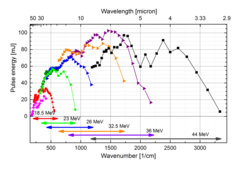
The generation of molecular vibrational spectra is one of the main uses of the FHI FEL. The IR spectral region is often referred to as the "molecular fingerprint" region, as it is the region in which the fundamental vibrational modes of molecules, clusters or solid materials are located. These vibrational modes are directly connected to the forces that hold the atoms together and to their geometrical structure.



